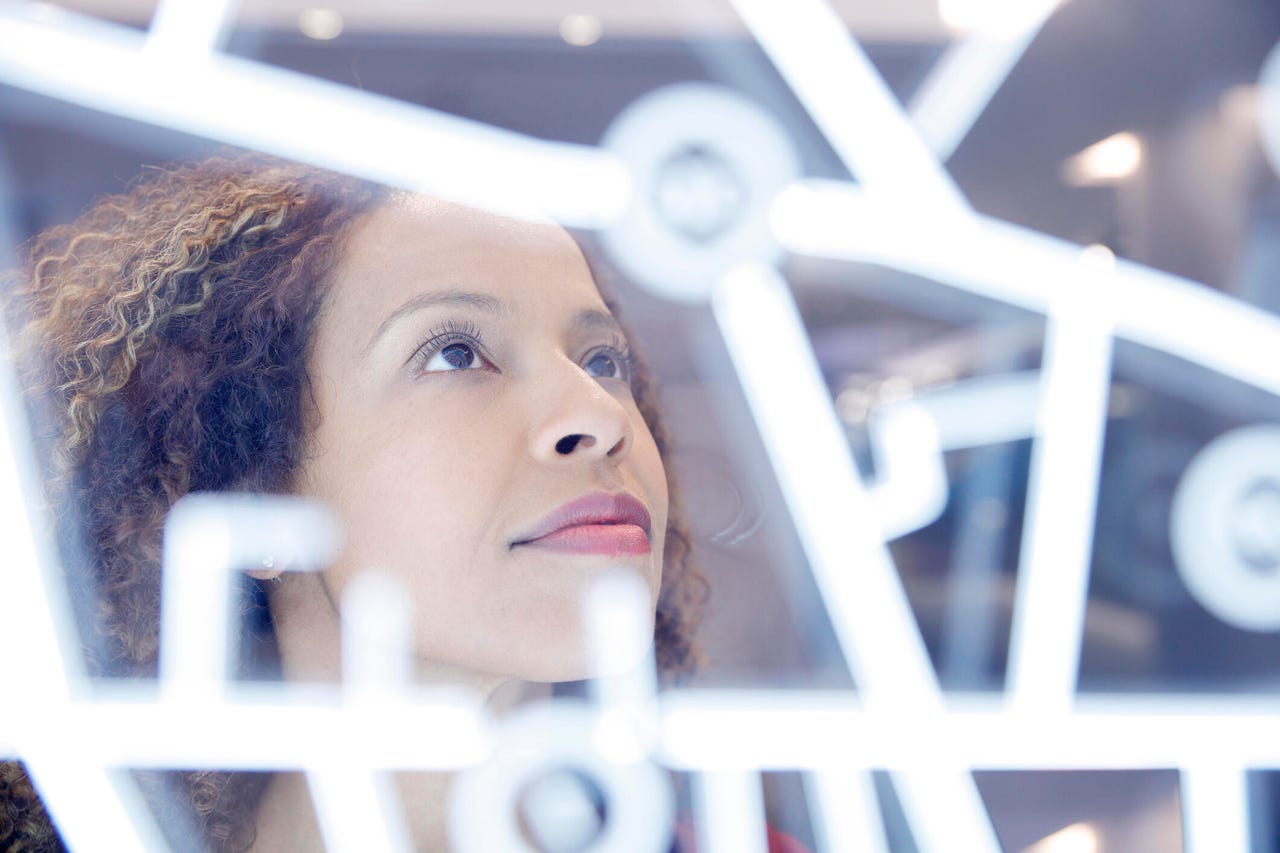































 Image: Bloom Productions/Getty Images
Image: Bloom Productions/Getty Images Looking outside the bubble of the technology sector, how close are technology professionals really getting to working with their businesses' ultimate customers? Are they still sequestered within the walls of their IT departments? Or are the walls finally coming down? It seems clear thatsomewalls are finally coming down, and in the process, technology professionals are learning new roles in design thinking and as educators.
Digital transformation projects are about driving fundamental change across customer experience, tech and business culture. This ZDNet special report brings you the latest trends and insights you need to succeed.
Read nowThe walls between tech teams and end-user customers have disappeared altogether at some mainstream companies. This certainly has been the case at McCarthy Holdings, a commercial construction company. For McCarthy, the ultimate customers are the final occupants of the buildings under construction, says Justin McFarland, executive vice president of information systems at McCarthy. "Our job is to help construction partners work alongside new technologies."
The company's technology teams work right alongside its project managers to deliver. "That final user experience is critical to us," he explains. "We encourage our technology professionals to get out of the office and onto our construction job sites to gain a better understanding of what the trade and field workers do on a regular basis, and identify possible opportunities for technology to help them in their day-to-day activities. It is critical to observe, listen, and ask questions to ... help deliver a more effective customer experience."
Also:Design thinking can help connect tech pros more directly to customer experience
Tools assisting with this engagement include "prediction, automation, smart job sites and digital twins," he says. "We have resources in each of our geographic regions where we scale new technology from project to project to ensure the 'why' is understood, provide necessary training and support, and educate teams on how that technology solution makes sense in current processes and day-to-day operations."
At the same time, getting technology professionals up to speed with crucial pieces of this customer collaboration -- user experience (UX) and design thinking -- is a challenge, McFarland adds. "There is a widely recognized expectation to create seamless and positive customer experiences. That said, specific training and technological capabilities are a headwind that professionals are experiencing. While legacy employees may be fully immersed and knowledgeable about a certain program and its technical capabilities, it is more unusual to have both the technical and UX design expertise. The construction industry is working to find the right balance of technology expertise and awareness with UX and design proficiencies."
Developing UX and design thinking skills is high on the McCarthy IT department's agenda, McFarland says. "UI/UX and visual design training are critical to deliver both a superior experience and product for the customer. This could also include educational elements around storyboarding, prototypes, and how to analyze them, along with typography, color schemes, and layouts, among other technological components. It's important to note that we do not have to be experts in all of these areas -- we can and should leverage our partners in other teams, such as marketing or communications, to ultimately shape a design. Knowing which questions to ask and where to focus are key."
Also:User experience: Not quite about the user and not really the experience
Other pertinent skills for tech professionals, especially within the construction industry, "include communication and leadership training to assist with facilitation, collaboration, and presentation tasks during a project's life cycle," McFarland adds.
McFarland's team has another mandate: to assist and educate colleagues who may not be technologically proficient. "By showing clear examples of what has worked well and where we can go from here, along with how someone's day-to-day is impacted, teams can knock down barriers to adoption. We recognize that we are working with a range of experience and comfort with ever-evolving tech tools," he says. "We're working to educate more tenured staff on why tech matters, how it benefits everyone involved, and [how to] demonstrate value to those who are less tech-driven. We also identify champions in the field who are willing to try and validate new tech and leverage these teams to influence their peers to drive quicker adoption."
This peer-to-peer interaction enables groups from across the company "to hear from other experts, as this technology can appear new and potentially intimidating. We also implement thoughtful change management strategies to help establish trust and ultimately garner greater buy-in for our technology solutions."
Also: Coding skills are in demand but companies want more from technology professionals
Another part of the challenge consists of bringing into alignment "the complicated application ecosystem our construction teams and partners utilize during a project life cycle," he says. "We've seen that logging into system A versus system B can create a different user experience. With multiple programs in place, our goal is to leverage tech to create a common, cohesive experience."
McCarthy is in the exploration phase of employing "experience-layer platforms to better support our partners and the full project life cycle from beginning to end -- from the earliest planning phase when a building project is under consideration, through design and construction, and into operations," McFarland says.
 Tags quentes :
Negócio
Transformação Digital
Tags quentes :
Negócio
Transformação Digital